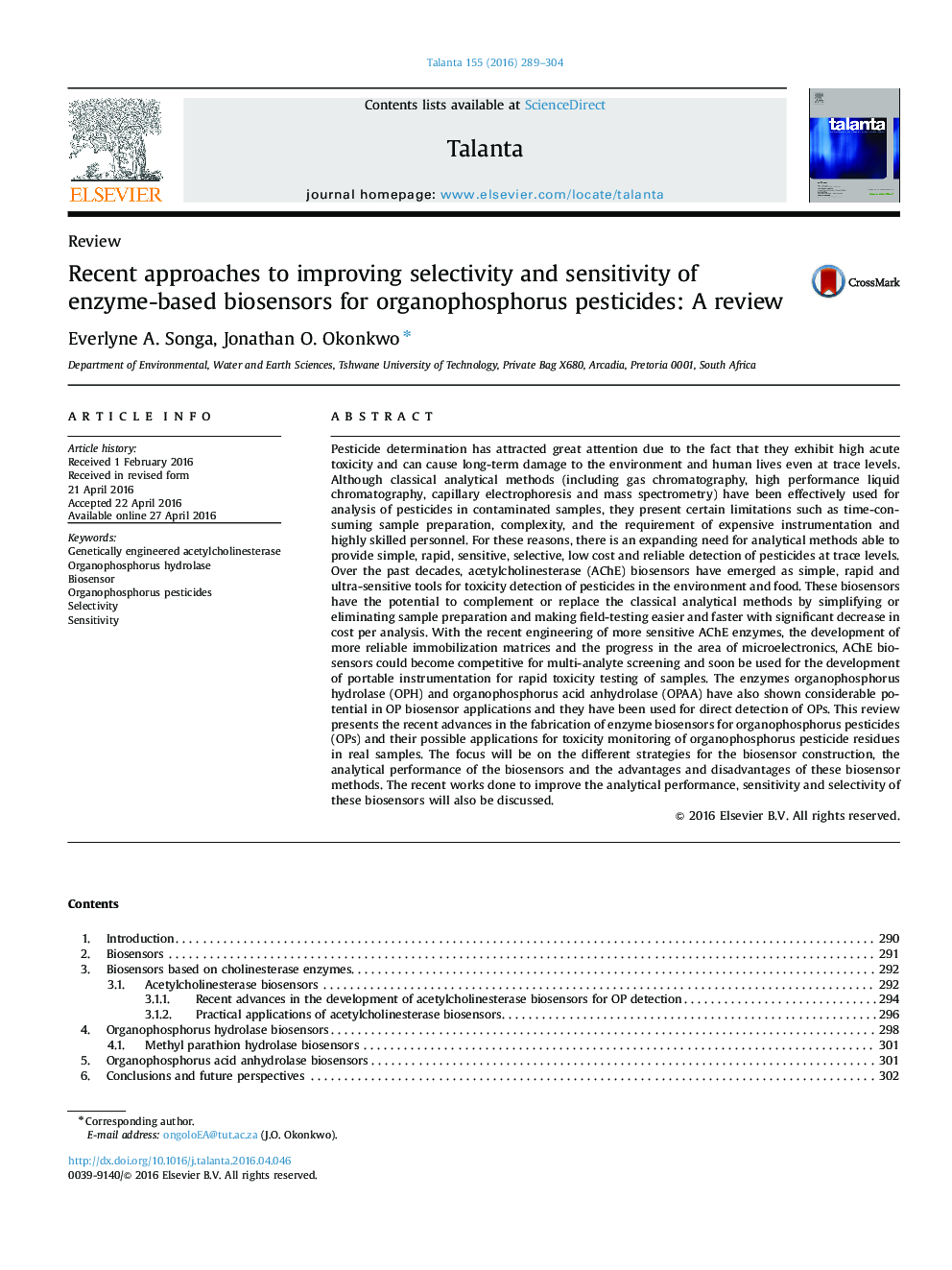| کد مقاله | کد نشریه | سال انتشار | مقاله انگلیسی | نسخه تمام متن |
|---|---|---|---|---|
| 1242443 | 1495780 | 2016 | 16 صفحه PDF | دانلود رایگان |
• Pesticides can cause long-term damage to environment and humans at trace levels.
• Engineering of AChE suggests they could become competitive for pesticide analysis.
• Engineering enzymes improve performance, sensitivity and selectivity of biosensors.
• OPH and OPAA enzymes have been used for direct detection of OPs.
Pesticide determination has attracted great attention due to the fact that they exhibit high acute toxicity and can cause long-term damage to the environment and human lives even at trace levels. Although classical analytical methods (including gas chromatography, high performance liquid chromatography, capillary electrophoresis and mass spectrometry) have been effectively used for analysis of pesticides in contaminated samples, they present certain limitations such as time-consuming sample preparation, complexity, and the requirement of expensive instrumentation and highly skilled personnel. For these reasons, there is an expanding need for analytical methods able to provide simple, rapid, sensitive, selective, low cost and reliable detection of pesticides at trace levels. Over the past decades, acetylcholinesterase (AChE) biosensors have emerged as simple, rapid and ultra-sensitive tools for toxicity detection of pesticides in the environment and food. These biosensors have the potential to complement or replace the classical analytical methods by simplifying or eliminating sample preparation and making field-testing easier and faster with significant decrease in cost per analysis. With the recent engineering of more sensitive AChE enzymes, the development of more reliable immobilization matrices and the progress in the area of microelectronics, AChE biosensors could become competitive for multi-analyte screening and soon be used for the development of portable instrumentation for rapid toxicity testing of samples. The enzymes organophosphorus hydrolase (OPH) and organophosphorus acid anhydrolase (OPAA) have also shown considerable potential in OP biosensor applications and they have been used for direct detection of OPs. This review presents the recent advances in the fabrication of enzyme biosensors for organophosphorus pesticides (OPs) and their possible applications for toxicity monitoring of organophosphorus pesticide residues in real samples. The focus will be on the different strategies for the biosensor construction, the analytical performance of the biosensors and the advantages and disadvantages of these biosensor methods. The recent works done to improve the analytical performance, sensitivity and selectivity of these biosensors will also be discussed.
Figure optionsDownload as PowerPoint slide
Journal: Talanta - Volume 155, 1 August 2016, Pages 289–304
